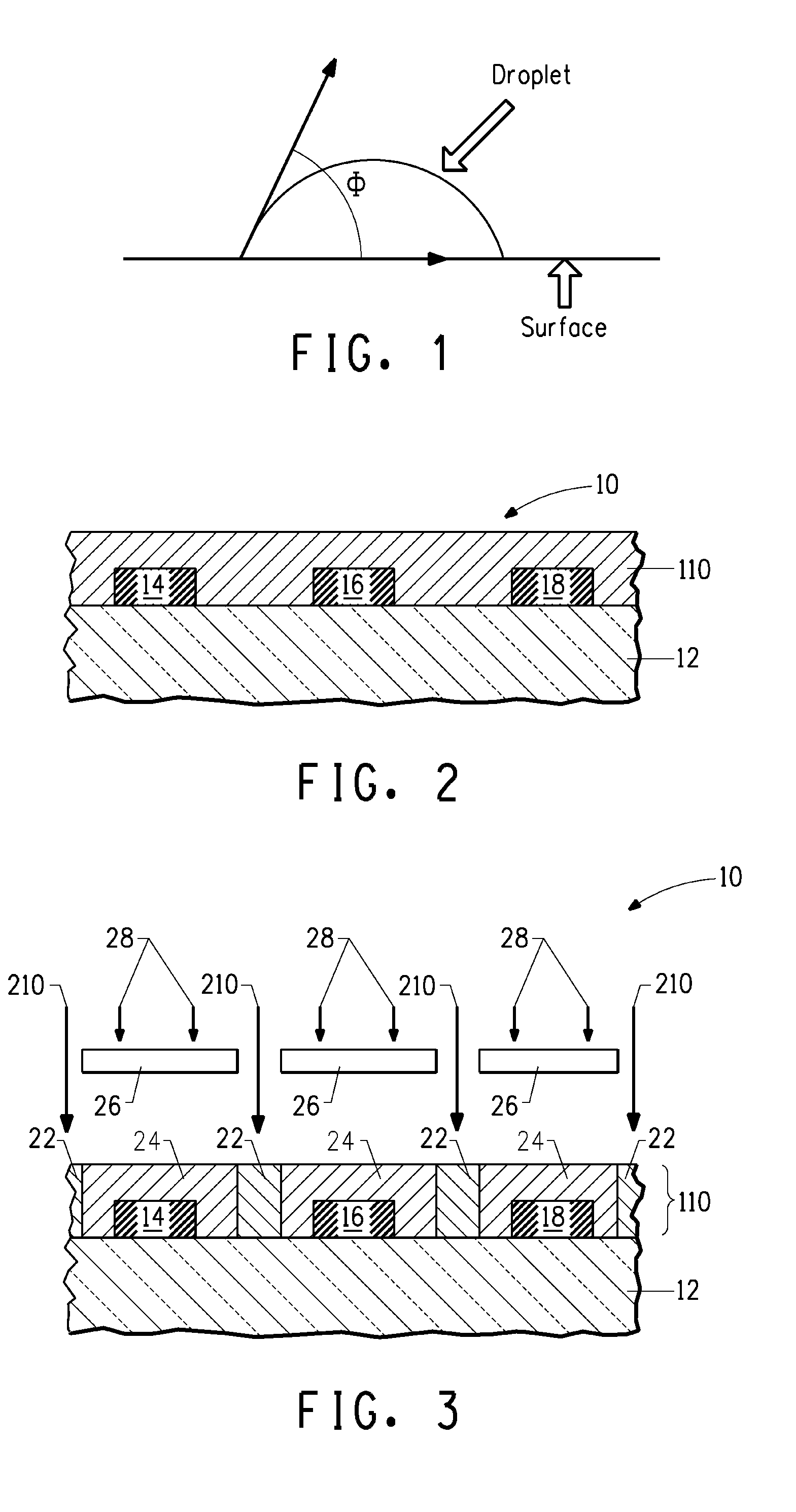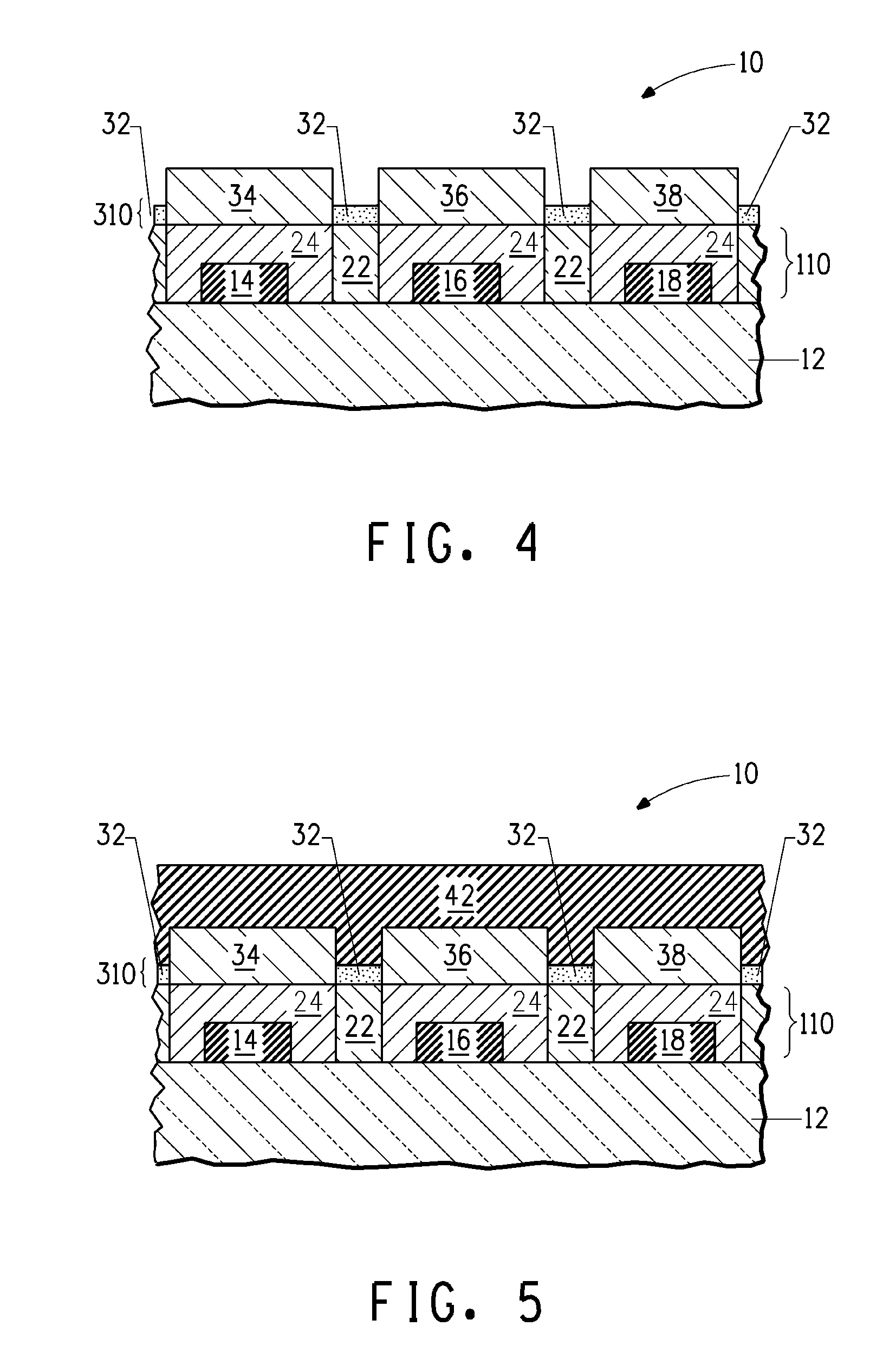Process for forming an organic electronic device including an organic device layer
a technology of electronic devices and organic materials, applied in the field of organic electronic devices, can solve the problems of difficult control of uniform formation and filling of many individual structures
- Summary
- Abstract
- Description
- Claims
- Application Information
AI Technical Summary
Benefits of technology
Problems solved by technology
Method used
Image
Examples
example 1
[0138]This examples illustrates the synthesis of bis-(3,3,4,4,5,5,6,6,7,7,8,8,8-tridecafluorooctyl)maleate (“PCSA-1”)
[0139]The 1H,1H,2H,2H-perfluoro-1-octanol (Aldrich) (36.2 grams, 99.4 mmole) was placed in a 250 ml flask under nitrogen and treated with maleic anhydride (4.06 grams, 41.4 mmole) followed by p-toluenesulfonic acid monohydrate (0.78 gram, 4.1 mmole). The mixture was stirred and heated under nitrogen to 113-115° C. to give a clear colorless liquid. The mixture was maintained at 113-115° C. for 65 minutes and then it was cooled to room temperature. The reaction mixture was chromatographed on a silica gel column (5 cm diameter and 19 cm long) using 15% ethyl acetate in hexane to give 27.07 grams (81%) of a colorless oil. The oil solidified after standing at room temperature. It was dissolved in a minimum amount (several milliliters) of ethyl acetate. The solution was diluted with approximately 40 ml of hexane to near cloud point. The solution was cooled in an ice bath an...
example 2
[0140]This example illustrates the process described herein where the resistivity of a hole-transport layer is increased, and the surface energy is decreased.
[0141]The hole-transport material is a crosslinkable copolymer of triphenylamine, dioctyl fluorene, and distyryl fluorene (“HT-1)”.
[0142]The radiation sensitizer is Darocur 1173 (Ciba Specialty Chemicals, Basel, Switzerland), which is an acetophenone derivative.
[0143]Backlight test displays will be made by coating sample solutions on to indium tin oxide coated glass substrates. Some of the displays will be exposed to UV light. The backlights will be baked at 275 C for 30 minutes to crosslink the HT-1, and simultaneously remove the Darocur 1173, if present. The backlights will be covered with appropriate cathode layers of ZrQ then LiF then Al by vapor deposition, and then encapsulated to exclude air and water vapor. The resulting diodes represent the structure of the leakage paths in an actual display. A voltage will be applied,...
PUM
| Property | Measurement | Unit |
|---|---|---|
| temperature | aaaaa | aaaaa |
| wavelength | aaaaa | aaaaa |
| wavelength of radiation | aaaaa | aaaaa |
Abstract
Description
Claims
Application Information
 Login to View More
Login to View More - R&D
- Intellectual Property
- Life Sciences
- Materials
- Tech Scout
- Unparalleled Data Quality
- Higher Quality Content
- 60% Fewer Hallucinations
Browse by: Latest US Patents, China's latest patents, Technical Efficacy Thesaurus, Application Domain, Technology Topic, Popular Technical Reports.
© 2025 PatSnap. All rights reserved.Legal|Privacy policy|Modern Slavery Act Transparency Statement|Sitemap|About US| Contact US: help@patsnap.com



